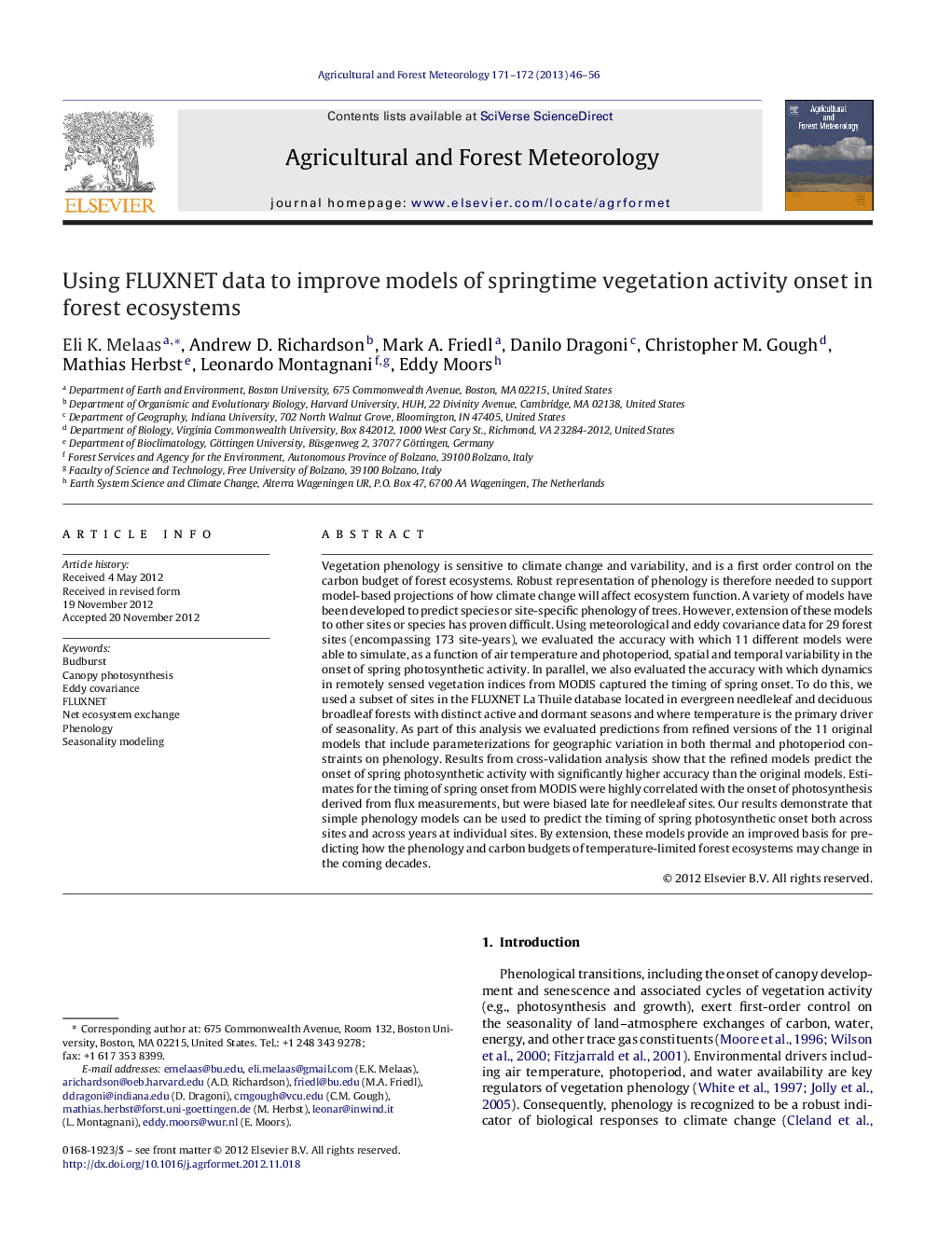| کد مقاله | کد نشریه | سال انتشار | مقاله انگلیسی | نسخه تمام متن |
|---|---|---|---|---|
| 81841 | 158354 | 2013 | 11 صفحه PDF | دانلود رایگان |

Vegetation phenology is sensitive to climate change and variability, and is a first order control on the carbon budget of forest ecosystems. Robust representation of phenology is therefore needed to support model-based projections of how climate change will affect ecosystem function. A variety of models have been developed to predict species or site-specific phenology of trees. However, extension of these models to other sites or species has proven difficult. Using meteorological and eddy covariance data for 29 forest sites (encompassing 173 site-years), we evaluated the accuracy with which 11 different models were able to simulate, as a function of air temperature and photoperiod, spatial and temporal variability in the onset of spring photosynthetic activity. In parallel, we also evaluated the accuracy with which dynamics in remotely sensed vegetation indices from MODIS captured the timing of spring onset. To do this, we used a subset of sites in the FLUXNET La Thuile database located in evergreen needleleaf and deciduous broadleaf forests with distinct active and dormant seasons and where temperature is the primary driver of seasonality. As part of this analysis we evaluated predictions from refined versions of the 11 original models that include parameterizations for geographic variation in both thermal and photoperiod constraints on phenology. Results from cross-validation analysis show that the refined models predict the onset of spring photosynthetic activity with significantly higher accuracy than the original models. Estimates for the timing of spring onset from MODIS were highly correlated with the onset of photosynthesis derived from flux measurements, but were biased late for needleleaf sites. Our results demonstrate that simple phenology models can be used to predict the timing of spring photosynthetic onset both across sites and across years at individual sites. By extension, these models provide an improved basis for predicting how the phenology and carbon budgets of temperature-limited forest ecosystems may change in the coming decades.
► Current ecosystem models exhibit poor representation of phenology.
► New phenology models presented in the study provide significant improvement.
► Biome and climate-specific parameterizations may be needed to predict phenology.
Journal: Agricultural and Forest Meteorology - Volumes 171–172, 15 April 2013, Pages 46–56